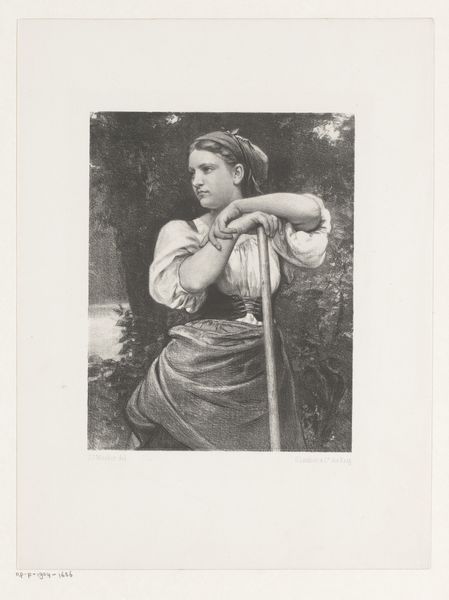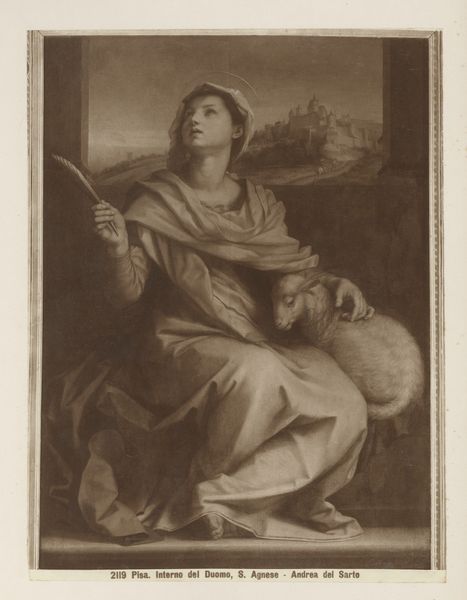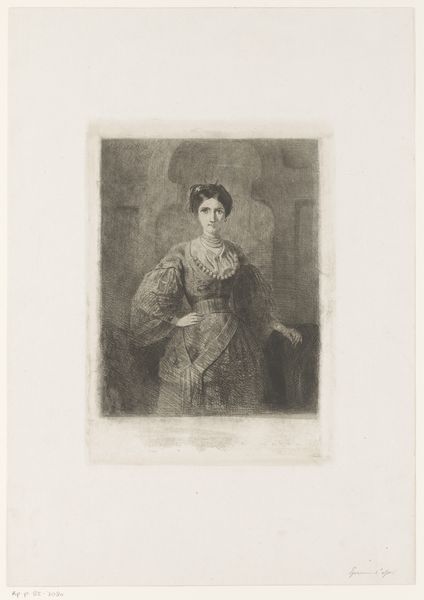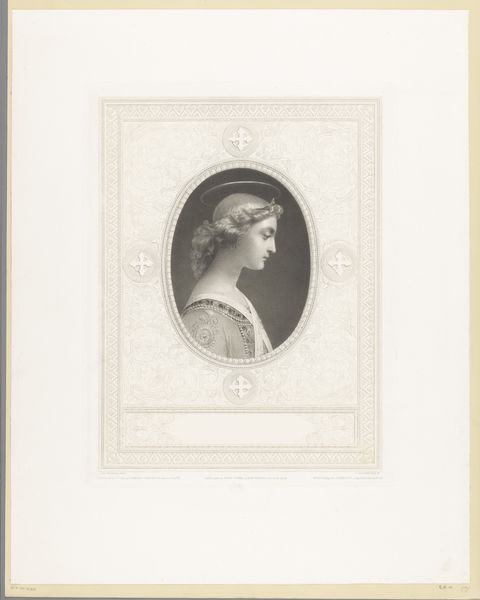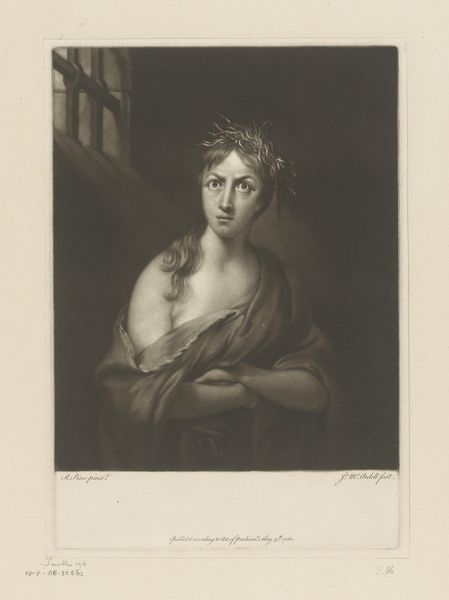
#
portrait
#
print photography
# print
#
landscape
#
ancient-egyptian-art
#
genre-painting
#
academic-art
Dimensions: height 599 mm, width 436 mm
Copyright: Rijks Museum: Open Domain
Editor: This print, “Egyptian Peasant Woman Resting Her Hands on a Vase,” likely made between 1841 and 1886 by Rudolf Stang, seems to be rooted in an idealization of rural life. I’m curious, what aspects of the artistic and social context do you find most compelling in this image? Curator: It’s fascinating how Stang uses the print medium to mediate the exotic. Let’s consider the materiality: a print allows for mass production and distribution. How does that democratize, or perhaps distort, the representation of this ‘Egyptian peasant woman’? Think about the intended audience and what they consumed along with images like these. Editor: That’s a great point! The ability to reproduce it would influence the reach of this image… So how might that mass consumption affect our understanding, even today, of labor or class, or this specific subject? Curator: Exactly! Look at the detail rendered on the vase, the drapery, compared to what seems to be the generic, landscape behind her. Where does the emphasis lie, and what does that reveal about the value system embedded in its creation and reception? The vase seems elevated beyond its use as a vessel, taking a material prominence above the figure. How does it influence your reading of this scene? Editor: I see your point; the vase could symbolize cultural wealth or tradition, possibly overshadowing her individuality. The level of detail is remarkable... it gives this domestic item far more significance. Curator: Precisely. And beyond the aesthetics of craftsmanship, let’s consider labor: Who crafted this vase, and how does that labor intersect with the woman's perceived role? Think also of the labor involved in making the print itself – the engraver, the printer. It layers the socio-economic dimensions of its moment in history. Editor: It gives me a new appreciation to see the work through that lens, considering the economic exchanges, the commodification of labor, and the accessibility and consumption of the final piece. It adds so much depth to the piece! Curator: Agreed! Focusing on these tangible aspects opens new pathways to connect with and interpret the artwork.
Comments
No comments
Be the first to comment and join the conversation on the ultimate creative platform.
